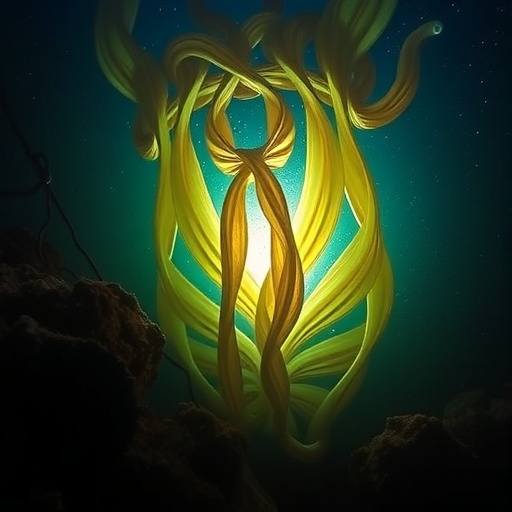A pioneering study emerging from the University of Hawai‘i at Mānoa has uncovered alarming evidence that deep-sea mining waste discharged into midwater zones of the Pacific Ocean’s Clarion-Clipperton Zone (CCZ) could cause significant disruption to marine food webs. Published recently in Nature Communications, this research is the first to demonstrate how sediment-laden effluent from mining activities threatens the ecological integrity of the twilight zone, a mysterious and critical ocean layer spanning approximately 200 to 1,500 meters below the surface. This zone hosts an immense abundance of zooplankton and micronekton—microscopic and small swimming animals that underpin the marine food web across vast oceanic expanses.
The investigation illuminates that an estimated 53% of zooplankton and 60% of micronekton communities encounter negative impacts from the suspended mining debris released midwater. These findings signify more than localized contamination; they forewarn disruptions reaching predators higher up the food chain, including commercially important fish, seabirds, and marine mammals that rely on these mid-trophic organisms for sustenance. The researchers deployed a remotely operated vehicle (ROV) to monitor nodules on the abyssal seafloor in the CCZ, observing sediment plumes disrupting the normally clear midwater column with murky, finetextured particles.
During deep-sea mining, polymetallic nodules rich in cobalt, nickel, and copper—minerals essential for green technologies—are extracted from the seabed. The collected nodules are pumped to surface vessels via hydraulic risers, alongside seawater saturated with finely pulverized sediment and nodule fragments. This mixture, termed mining discharge, must be returned to the ocean. Yet, scientific consensus on discharge depth remains unsettled, with some operators proposing release within the vital twilight zone. The current study rigorously analyzed water samples at mining discharge depths, revealing that particulate matter associated with mining waste possesses dramatically lower concentrations of amino acids compared to naturally occurring organic particles. Amino acids are crucial nutritional compounds fueling marine life, thus mining waste effectively dilutes the quality of food available to deep-sea organisms.
Michael Dowd, lead author and oceanography graduate student at the UH Mānoa School of Ocean and Earth Science and Technology (SOEST), emphasized that the discharge creates a dense, turbid layer akin to sediment-choked river waters, which overwhelms the sparse organic particles typically consumed by zooplankton. This replacement of nutrient-rich particles with low-quality sediment “junk food” may severely reduce zooplankton survival and growth. Given that micronekton feed predominantly on zooplankton, their populations would likely suffer cascading nutritional stress, potentially reverberating through the entire oceanic food web—a complex system finely tuned over millennia to scarce particle availability.
Co-author Erica Goetze, an oceanography professor at SOEST specialized in marine zooplankton ecology, highlighted the ecological dependency on detrital particles at midwater depths. These tiny, naturally derived particulate organic material constitutes the fundamental energy source for many twilight zone inhabitants. The substitution of this high-quality prey with mining waste particles threatens to undermine primary trophic interactions essential for carbon transport and biological productivity in deep ocean ecosystems.
This research arrives amidst intensifying global demand for critical metals powering electric vehicles and renewable energy infrastructure, with approximately 1.5 million square kilometers of the CCZ currently licensed for exploratory mining. The potential economic benefits collide starkly with profound environmental risks that remain insufficiently regulated. Existing regulatory frameworks lack explicit guidelines governing the release depth and management of mining effluent, compelling scientists to call for urgent integration of ecological data into policymaking.
The twilight zone itself is a paradox of scarcity and richness, harboring lifeforms adapted to minimal resources yet performing vital planetary functions. Organisms such as krill, squid, deep-sea fish, and gelatinous species like jellyfish and siphonophores engage in diel vertical migrations, shuttling carbon and nutrients between ocean layers—a process critical for global carbon sequestration and climate regulation. Introduction of mining waste has the potential to not only compromise organisms’ nutritional intake but impede these key biogeochemical cycles.
Jeffrey Drazen, SOEST professor and deep-sea ecologist, likens the impact of mining plumes to “dumping empty calories into a system that has evolved on a finely balanced natural diet.” The alteration in particle quality posed by mining activity disrupts feeding behaviors and energy flows that sustain midwater ecosystems, many of which lack the ability to evade suspended sediments due to limited mobility or sensory capacities.
Urgent concerns extend to commercial fishing sectors operating within or adjacent to the CCZ, notably the Pacific tuna fisheries, which could be impacted through pollutant accumulation or depletion of forage species. The potential for widespread trophic disruption raises questions about food security and ecosystem resilience for dependent human communities worldwide.
Brian Popp, earth sciences professor and marine isotope biogeochemistry expert, underscores the timeliness of the findings given the nascent stage of industrial-scale mining. “Deep-sea mining has not yet commenced commercially,” he commented. This presents a critical window for informed decision-making and integration of ecological safeguards before irreversible damage occurs.
To guide this integration, the study’s authors advocate for international governing bodies such as the International Seabed Authority and national entities like NOAA to incorporate the new evidence into evolving regulatory frameworks. They emphasize that discharge depth is a pivotal factor determining the fate and dispersal of mining plumes, which in turn influences their ecological impact across vertical oceanic gradients.
Expanding research to encompass the full vertical extent of ocean ecosystems, from surface waters through the mesopelagic twilight zone to abyssal depths, is essential to develop comprehensive management strategies. The authors caution that overlooking midwater communities risks undermining the ocean’s biological and chemical integrity at large.
In conclusion, this landmark study spotlights a critical, yet underappreciated, dimension of deep-sea mining environmental impacts. It raises fundamental questions about humanity’s capacity to balance industrial resource extraction with stewardship of fragile marine ecosystems that underpin planetary health. The twilight zone—mesmerizing, mysterious, vital—must be preserved through science-informed policies and precautionary principles before the dark ocean’s delicate web of life is irreparably altered.
Subject of Research: Animals
Article Title: Deep-sea mining discharge can disrupt midwater food webs
News Publication Date: 6-Nov-2025
Web References: http://dx.doi.org/10.1038/s41467-025-65411-w
Image Credits: UH/NOAA DeepCCZ Expedition
Keywords: Deep sea mining, Fisheries, Marine biology, Marine ecology, Marine ecosystems




